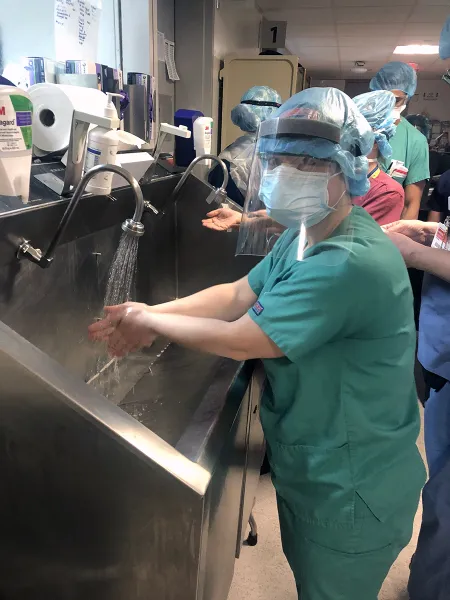Sixty miles north, in New York City, Madeline Arena ’13, DPT ’15, remembered a similar moment, which also stemmed from one of her earliest patients. An inpatient physical therapist at another epicenter, New York Presbyterian Hospital/Columbia Medical Center, Arena worked with a woman who had been surprised to regain consciousness in a place where patients aren’t usually awake to see: an operating room. Additional Intensive Care Unit rooms were built in order to accommodate the increase in numbers of critically ill patients.
“Just to kind of paint a picture, the OR looks like a room out of a sci-fi movie — metal everywhere with tons of machines, and everything’s beeping. There are two or three other patients in that room, and everybody’s on ventilators.”
The woman had been taken off a ventilator once but had to be put back on it the same day. When she came to after a week, she could follow simple commands.
Arena later asked the patient what her first reaction was to waking up after being under for so long: “She said she looked around at all of the other patients in this OR who were asleep, so to speak, and she just bawled. She was afraid, and she cried because she was worried this was how she was going to have to live the rest of her life.”
Arena describes the scenes that unfolded over the following weeks with this patient in the same way a proud parent might record a child’s milestones. And, similarly, the patient’s family proudly oohed and aahed at her over FaceTime: “That kind of gave her hope to continue and fight on. She felt like she was going to be able to get better.”
Arena recalls first seeing her. “She was scared, but I asked her if she wanted to try to get up to see how her strength was. She was so motivated, so very willing, and I won’t ever forget that.”

